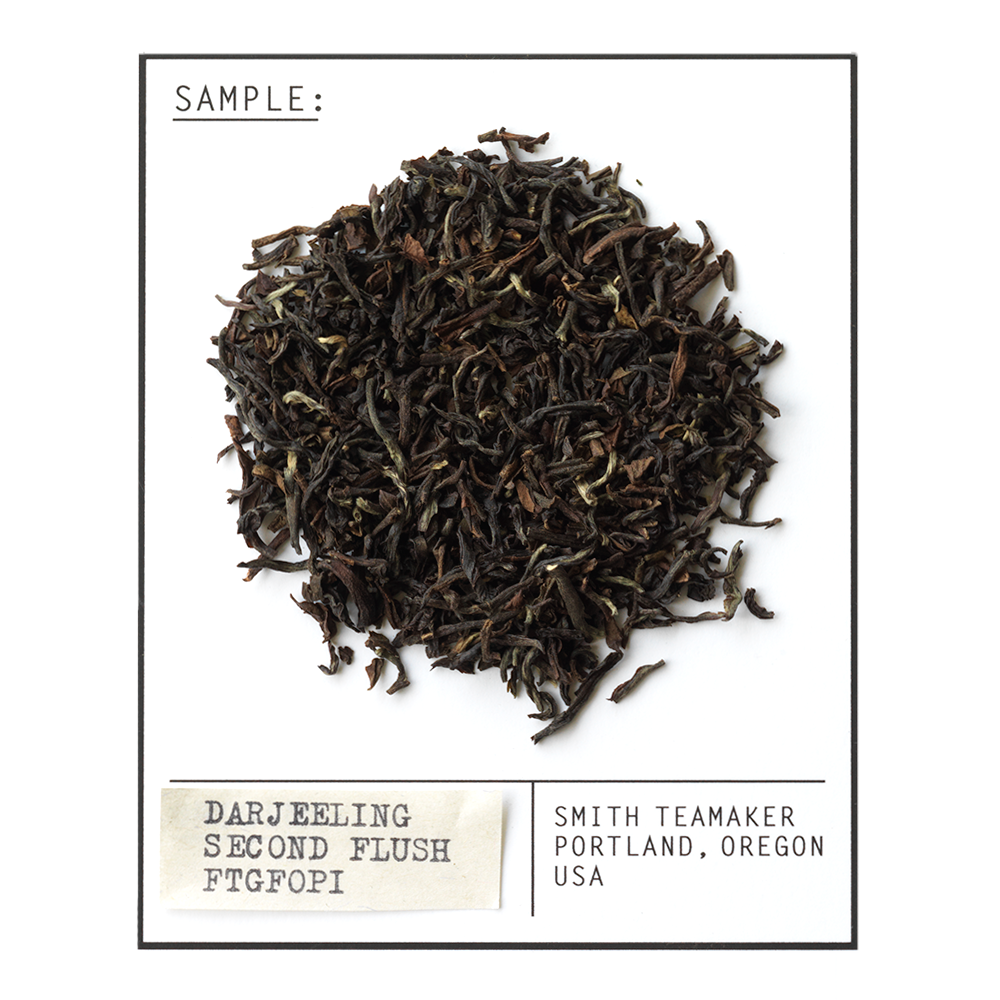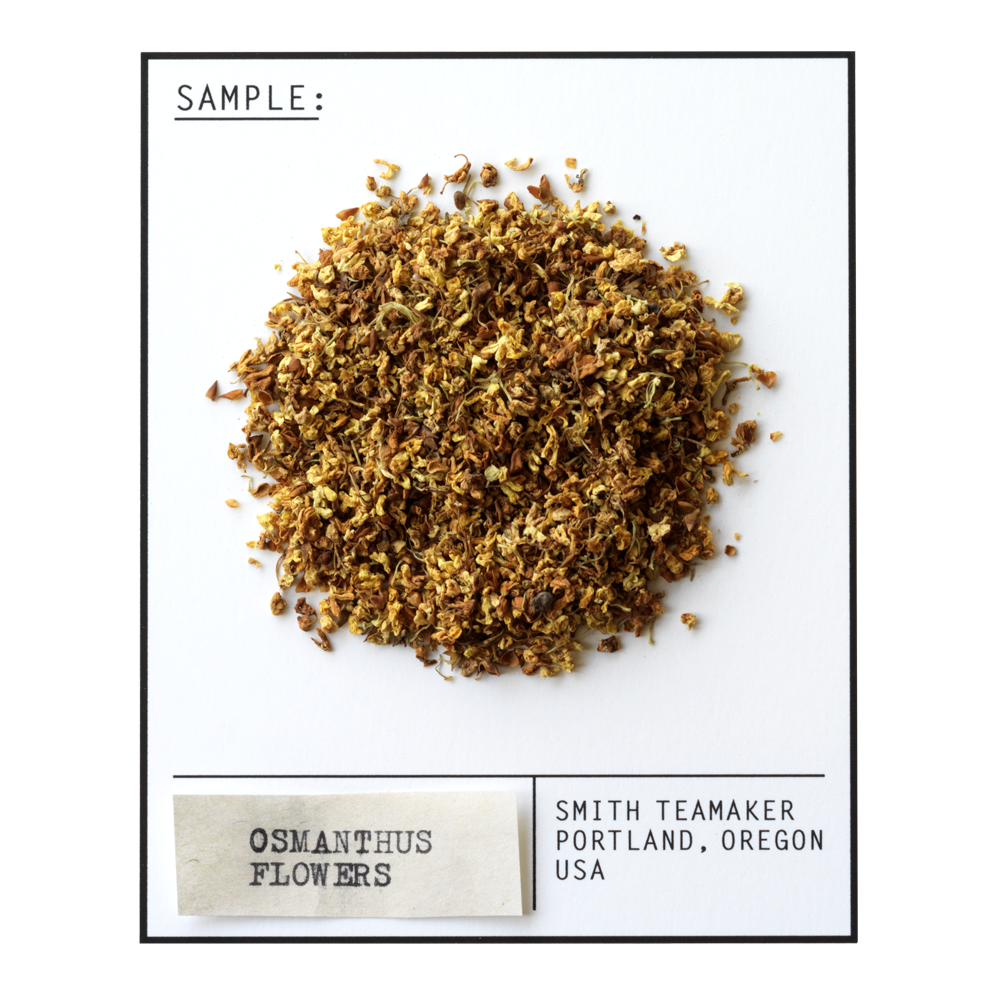





Ingredients
First and second flush Darjeeling black tea, sarsaparilla, Assam black tea, honeybush, rose petals, and osmanthus flowers.
Blend Numerology
Blend No. 09 in honor of our founding year.
Preparation
For best flavor, bring spring or freshly drawn filtered water to a boil (212 degrees). Steep five minutes. Take a deep breath and imagine you’re standing in the lush tea gardens of Darjeeling.
- Select an Ingredient:
- 1st flush darjeeling
- 2nd flush darjeeling
- assam
- osmanthus flower
- Pink Rose Petals
- Sarsaparilla
1st Flush Darjeeling
Indian Black Tea
Darjeeling, once a British hill station, is known for producing some of the world’s most prized and expensive teas. The high elevation of Dajeeling tea gardens puts stress on the bushes and results in teas of exceptionally nuanced flavor. Less oxidized compared to later flushes, first flushes are lighter in body and greenish in color, with notes muscatel grape, burnt sugar and sage.
Darjeeling
Nestled in the foothills of the Himalayas in northern India, the Darjeeling region is home to 87 tea gardens. First flush begins in late March and lasts about 30 days, during which time each bush is plucked every seven days.

2nd Flush Darjeeling
Indian Black Tea
Darjeeling, once a British hill station, is known for producing some of the world’s most prized and expensive teas. The high elevation of Dajeeling tea gardens puts stress on the bushes and results in teas of exceptionally nuanced flavor. Teas produced during this period have fuller flavor than teas from the first flush, with notes of muscatel grape, wintergreen and sage.
Darjeeling
Nestled in the foothills of the Himalayas in northern India, the Darjeeling region is home to 87 tea gardens. Second flush begins in early May and lasts for about 30 days, where the tea bushes are plucked every seven days.

Assam
Indian Black Tea
Assam tea is the biggest, brightest, richest and most astringent tea made. It is the backbone to breakfast style teas of nearly all brand and quality although it is also used in many blends for body and top notes. Assam is less floral and has more bread or biscuit-like flavor than other origins, and is often described as malty or coppery.
Assam Region
The Assam region is located in Northeast India, and borders Bhutan and Bangladesh. At near sea level, this region produces teas that are full flavored, rich, and chewy with distinct characteristics of caramel and malt. The best teas from this region are plucked and processed in June and July, a harvest also known as the 2nd Flush.

Osmanthus Flower
Chinese Botanical
Osmanthus is a species of evergreen shrubs and trees native to Asia. Its flowers are extremely fragrant and when made into a tea have strong peach notes. A favorite of Steve's, we use this botanical in our signature White Petal blend.
Zhejiang Province
Zhejiang Province is located in Eastern China, directly south of Shanghai and Jiangsu Province. These three areas made up a region known in earlier times as the "Land of Fish and Rice". Today, Zhejiang still holds up its end of the bargain as home to China's largest fishery and as one of the largest food producers, along with leading in tea production. Osmanthus is harvested here in the summer to be blended with tea, herbs or enjoyed on its own.

Pink Rose Petals
Indian Botanical
Pink rose petals are a favorite ingredient in our pantry. They provide sweetness and spice along with distinct floral qualities and are used to create complexity in a variety of our Signature Blends.
India
India is located in Southern Asia and is home to one of the world's oldest civilizations (Indus Valley). It is a country rich in history, culture, religion, geography and so much more, and has been famous since ancient times as a source for herbs and spices that continue to be coveted around the world. Our pink rose petals come from several regions in India and are harvested in March.

Sarsaparilla
Indian Botanical
Sarsaparilla root from India is unlike sarsaparilla from other origins. It has a taste and aroma that is vanilla-like and creamy, making it ideal for use in chai and blends with rooibos, or simply enjoying by itself. A climbing plant that grows throughout India, the root is dug, washed, peeled and sun dried. The thicker roots of the sarsaparilla plant make the best and most flavorful brew.
Nilgiri
Nilgiri translates to "blue mountain". It is a range of mountains that are part of the larger Western Ghats and are located in the states of Tamil Nadu and Kerala in Southern India. With over 24 peaks reaching higher than 2,000 meters, it made this area perfect for growing tea and other botanicals, along with providing the British in the Raj era respite during India's long hot summers.
